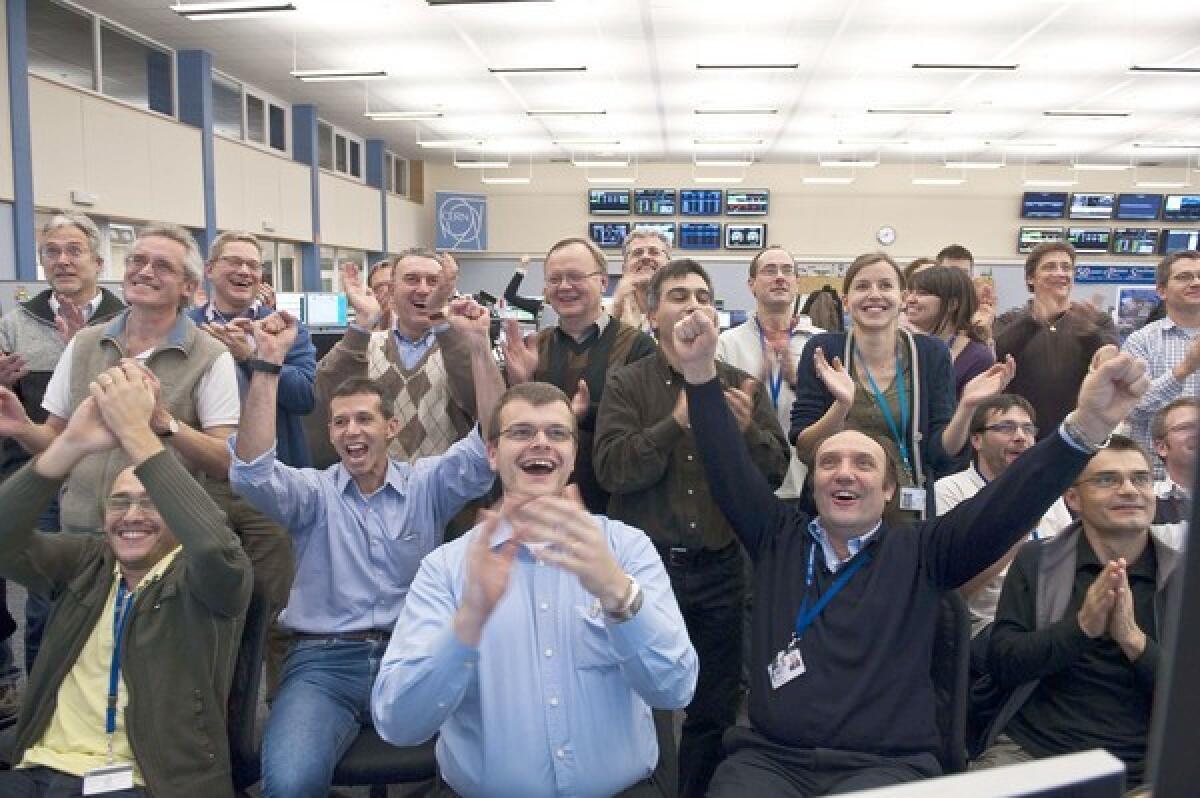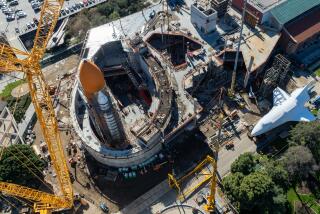Large Hadron Collider roars to life

The much-delayed, problem-plagued European Large Hadron Collider, the world’s largest particle accelerator, is finally beginning to show off the technological muscle that is expected to produce some of the greatest scientific discoveries of the 21st century.
After months of repairs, operators at the $8-billion collider located on the Franco-Swiss border successfully accelerated the machine’s twin beams of protons to 1.18 trillion electron volts Monday. That surpasses the previous collider record of 0.98 trillion electron volts, set in 2001 by America’s Tevatron collider, located at Fermilab outside Chicago.
Such power suggests the collider may yet do what its creators had hoped -- recreate conditions that existed shortly after the Big Bang.
The collider isn’t even at full power yet. In coming weeks, the international team of physicists and engineers who built the machine in a 17-mile circular tunnel 300 feet underground is planning to gradually increase the energies in each of the two proton beams.
Eventually, scientists hope to produce 14 trillion electron volts by colliding the beams together at just a whisker below the speed of light.
That would not only help researchers understand the conditions that led to the development of today’s universe, it also could unmask the long-sought Higgs boson particle, one of the most elusive and mysterious objects since the Yeti.
“That’s the Holy Grail,” said Caltech physicist Mark Wise.
Physicists believe the Higgs particle is what gives mass to the rest of the particle zoo, from quarks to neutrons and protons. But no machine has been powerful enough to create a Higgs.
“We are still coming to terms with just how smoothly the LHC commissioning is going,” Rolf Heuer, director general of the European Organization for Nuclear Research, said in a statement. “It is fantastic. However, we are continuing to take it step by step, and there is still a lot to do before we start physics in 2010. I’m keeping my champagne on ice until then.”
The history of collider physics dates to the early 20th century, when scientists realized that atomic nuclei were made of objects smaller than protons and neutrons.
The theory behind a collider is simple: Send a beam of protons crashing into something, either a stationary target or a beam of particles traveling in the opposite direction, then wait and see what comes out.
As bigger and more powerful colliders were built, physicists began to uncover a plethora of tiny objects, such as quarks, which were held together by other tiny objects called gluons.
To understand the infinitesimal nature of these new objects, consider that if a quark measured an inch, an atom would stretch a thousand miles.
These discoveries allowed scientists to devise a picture of the universe at the subatomic level. Called the Standard Model, it is considered the most successful scientific theory in history, explaining how the melange of particles fits together and gives rise to the familiar forces that surround us.
One thing the standard model has not been able to do, Wise said, is show why particles have mass and how that mass is distributed.
Scientists believe that’s because the particle responsible for mass, the Higgs boson -- named for Scottish physicist Peter Higgs -- can’t be produced in today’s accelerators. Because it is thought to bind weakly with other particles, “you need a lot of collisions” to produce one, Wise said.
That led scientists to envision a new generation of giant colliders.
Construction of the giant European collider was approved in 1995, but encountered numerous problems, beginning with funding overruns that bloated the already huge budget.
The next step in revving up the machine will be initiating low-energy collisions for calibration purposes.
The first meaningful results from collisions are expected in the first quarter of next year, scientists said.
More to Read
Start your day right
Sign up for Essential California for news, features and recommendations from the L.A. Times and beyond in your inbox six days a week.
You may occasionally receive promotional content from the Los Angeles Times.






